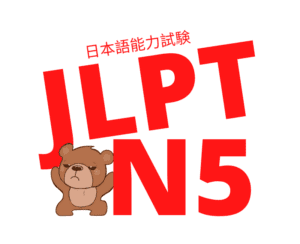
JLPT stands for "Japanese Language Proficiency Test" which is the translation of the test's name in Japanese:
日本語能力試験
nihongo nouryoku shiken
Let's break this down: 日本語 (Japanese Language) + 能力 (ability; proficiency; faculty) + 試験 (test; exam)
If you are unfamiliar with the JLPT, check the bottom of this page for more information.

We are slowly adding material here (N1-N4 will come soon), but to get started, click on the N5 image below.
Yes, but what is the JLPT?
The Japanese Language Proficiency Test is held twice a year (may only be once a year in some countries) all around the world. (Click here to see test sites near you.) It is the most popular test of Japanese ability for non-native students of Japanese.
It focuses on reading ability, vocabulary, listening, kanji, and grammar. The answers are all multiple choice (no writing!) and you must use a pencil.
The test has five levels prefixed with a N. N1 (the hardest) to N5 (the easiest). For example, you have to know about a hundred kanji to pass N5. N1, however, requires about 2,000 kanji.
Click here for a summary of the five levels.
Why Take the JLPT?
JLPT certification can help improve your chances for getting into a Japanese university, finding a nice job relating to Japan or Japanese, or simply for bragging rights. Most people, however, take the test to measure their ability. It is a great way to spot your weak points too.
You don't have to actually take the test to use JLPT study materials. Since the JLPT is organized by five levels, studying your kanji or grammar for your level is a good way to keep your learning structured. Plus, if you do sign up and pay the fee to take the test, you are giving yourself a huge incentive to study. Monetary, travel, and time investments are great motivational factors.










